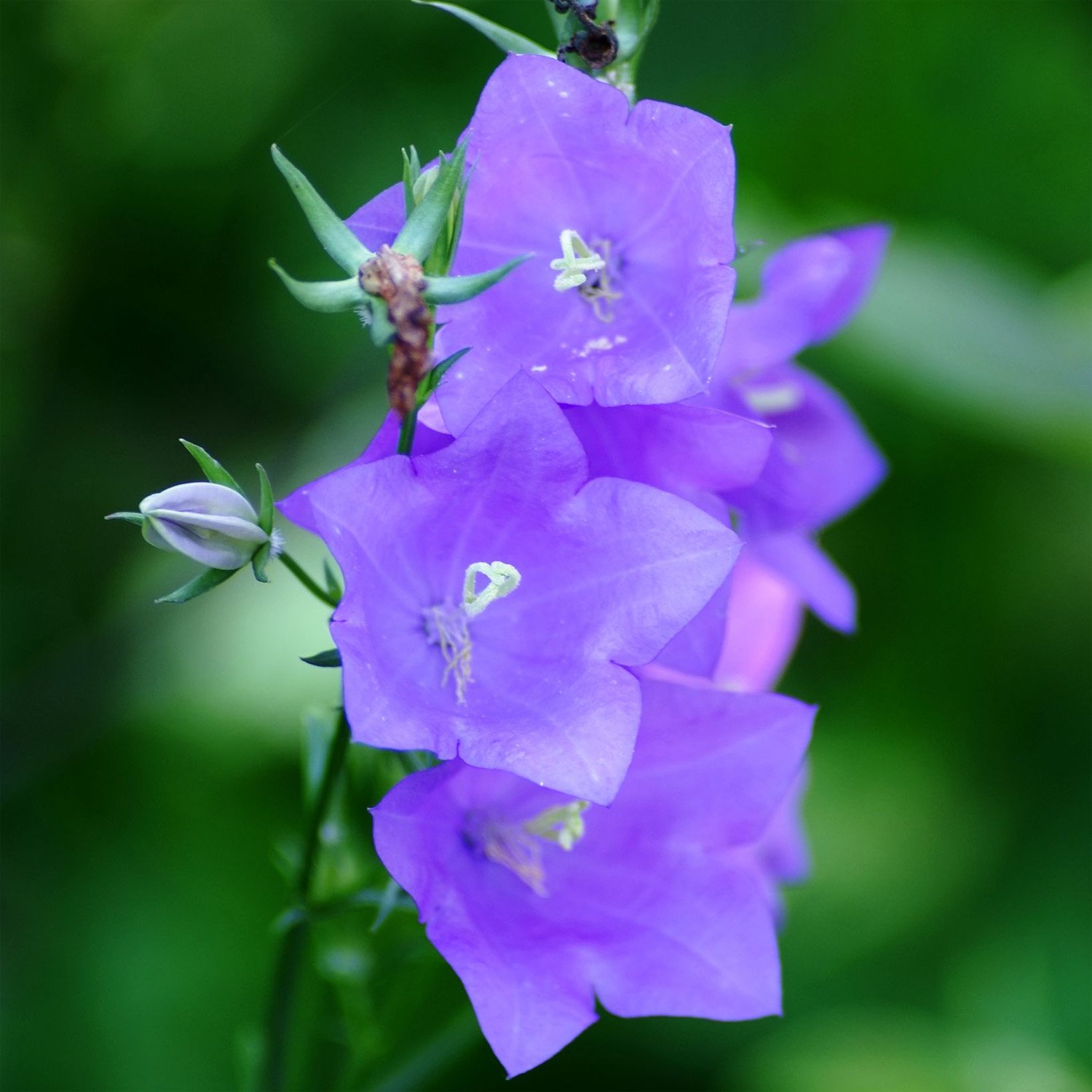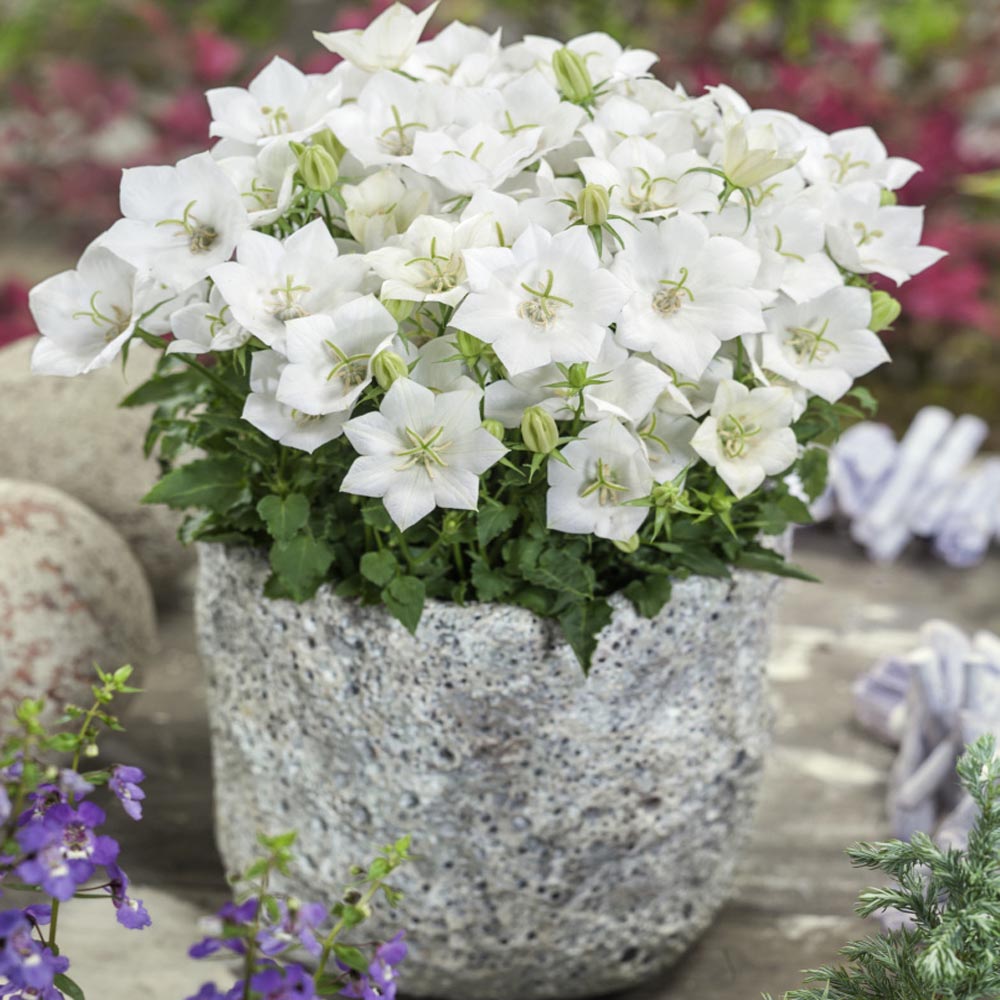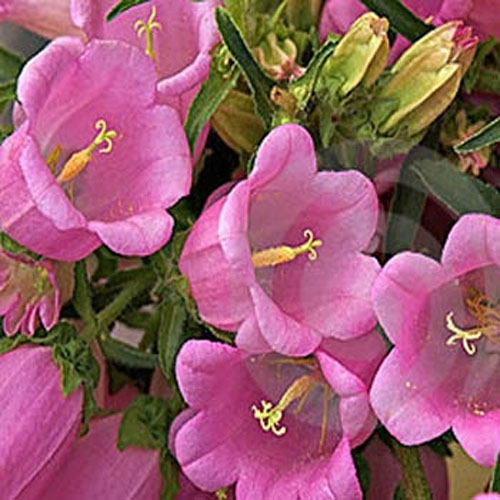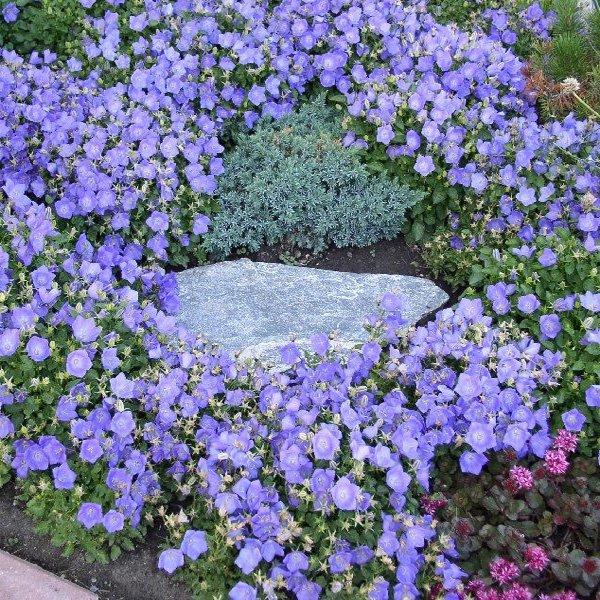
Bellflower Planting Guide
Quick Facts About Bellflower
Bellflowers, also known as Campanula, are indigenous to the Northern Hemisphere and offer great versatility. They can thrive as perennials, biennials, or annuals, based on your hardiness zone and the specific species you choose.
Planting Time
Start seeds indoors 10 weeks before the last frost. Sow 3 - 10 seeds per cell on well-draining, rich soil. Seeds can also be directly sown into garden once the risk of frost has passed.

Planting Location
Plant in full sun with well-drained soil.
How to Plant Bellflower
- Start seeds indoors 10 weeks before the last frost. Sow 3 - 10 seeds per cell on well-draining, rich soil.
- Plant 3 - 10 seeds per cell(check your packet for seeding rate guide) DO NOT COVER but press onto soil.
- Keep moist until germination.
- Once seedlings sprout, ensure they receive plenty of light by placing them on a sunny windowsill or positioning them 3-4 inches below fluorescent plant lights that are switched on for 16 hours daily and off for 8 hours at night. Adjust the lights as the plants grow taller. Avoid using incandescent bulbs as they generate excessive heat. Remember, most plants need a period of darkness to thrive, so do not keep the lights on for 24 hours.
- Cover the tray with a plastic bag or humidity dome and keep the soil moist.
- You can transplant outside when the last frost has passed at the earliest and the seedlings are 3 - 4 inches tall.
- Before transplanting, seedlings need to be “hardened off”. Accustom young plants to outdoor conditions by moving them to a sheltered place outside for a week. Be sure to protect them from wind and hot sun at first. If frost threatens at night, cover or bring containers indoors, then take them out again in the morning. This hardening off process toughens the plant’s cell structure and reduces transplant shock and scalding.
Planting Directly Outdoors
- The seeds can be planted directly in garden soil once the threat of frost has diminished. Spread the seeds evenly in loose, loamy soil and remember to water consistently to maintain soil moisture.

Care And Maintenance
- When growing bellflowers in a container, opt for a dwarf or trailing variety that complements your other plants. Ensure to use quality potting soil and a well-draining container. Keep container in sunny location, typically container bellflowers are grown as annuals.
- Bellflowers grown in the garden need minimal attention for surviving the winter. Typically, the foliage will stay green in most temperate regions during winter. In case of an extreme freeze, it's advisable to mulch the plants with organic material.
- Rust may appear as leaf spots on the underside of leaves in damp, humid areas. To prevent this disease, remove affected leaves and water bellflowers at the base. To avoid powdery mildew, ensure bellflowers are spaced adequately for proper air circulation. Bellflowers are typically pest-free, except for garden slugs that can damage the foliage.
- For bellflowers to bloom abundantly, ensure they receive ample sunlight and maintain the soil moist without being overly wet.
- To promote growth and blooming, divide garden bellflower clumps every two to five years, allowing the plants space to spread. Enhance the soil with organic matter or apply a well-balanced fertilizer. Avoid soil that is excessively moist.
- Bellflowers typically do not need pruning except for trimming away faded flower stalks and dead leaves. Some varieties maintain their green foliage even during mild winters.




































